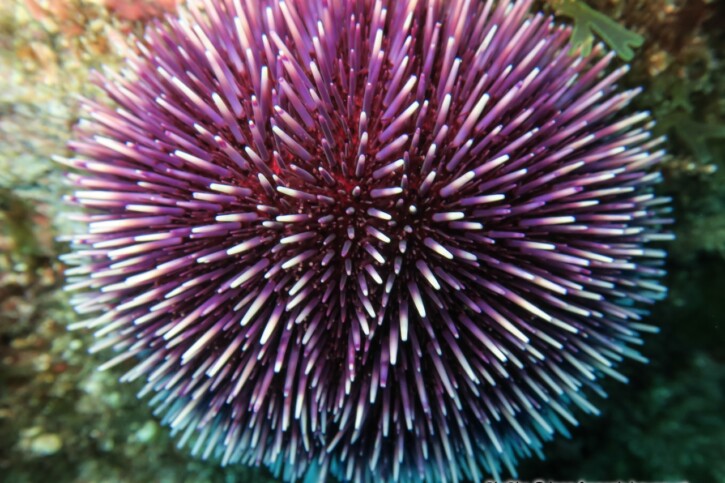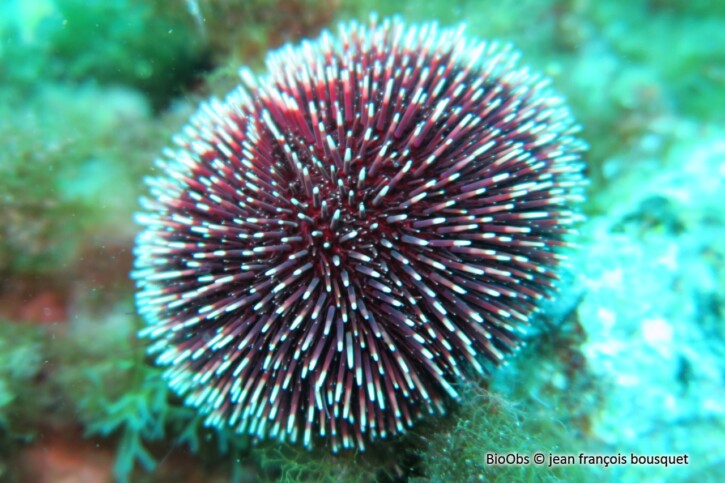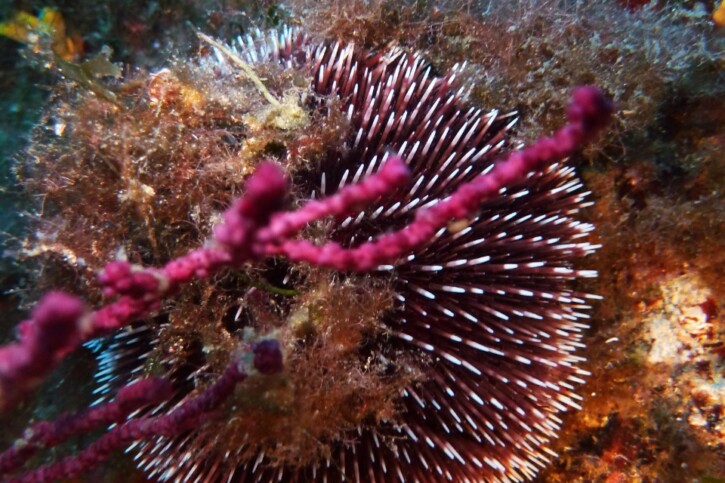violet sea urchin
| Scientific name | Sphaerechinus granularis |
|---|---|
| Descriptor | Lamarck |
| Year of description | 1816 |
| IUCN category (World) | NE |
| Family | Toxopneustidae |
| Genus | Sphaerechinus |


Introduction
Sphaerechinus granularis, commonly known as violet sea urchin, is a salt water echinoderm.
This sheet is currently being prepared. The texts currently proposed come from our data model or are being drafted. To request priority for this content, you can write to us HERE.
Who is it?
Morphology
-
Size8 - 13 cm
-
Size8 - 13 cm
How to recognize This echinoderm ?
The violet sea urchin measures between 8 and 13 cm. This echinoderm is bicolore with a predominantly blanc and violet body.
Behaviour & Life cycle
-
dietherbivorous
-
Sociabilitysolitary
-
territorialNo
-
Way of livingdiurnal
The violet sea urchin is an echinoderm solitary naturally found on the bottom. This species is herbivorous .
n general, this species does not care much about other animals crossing its path.
Reproduction
-
Reproductionovipare
-
Active sexual selectionNo
The violet sea urchin is an echinoderm ovipare.
Risks for humans
-
VenomousNo
-
StingYes
Origin and distribution
What is its habitat?
Natural environment characteristics
-
Temperature14 - 21 °C
-
Depth2 - 130 m
Biotope presentation
The violet sea urchin is most often found at a depth between 2m and 130m. However, it is not impossible to find this species at other depths.
Species of the same biotope
To go further
Sources & Contributions
Participation & Validation
The Fishipedia team and specialist contributors are committed to providing high-quality content. However, although the information comes from scientific sources or testimonials from specialists, the cards may contain inaccuracies.

Adrien Falzon
Translation
Translation done with the valuable contribution of our translators, who make this information available to a wider audience. We sincerely thank them for their commitment.
Scientific partners
Tags
Species of the same biotope



























